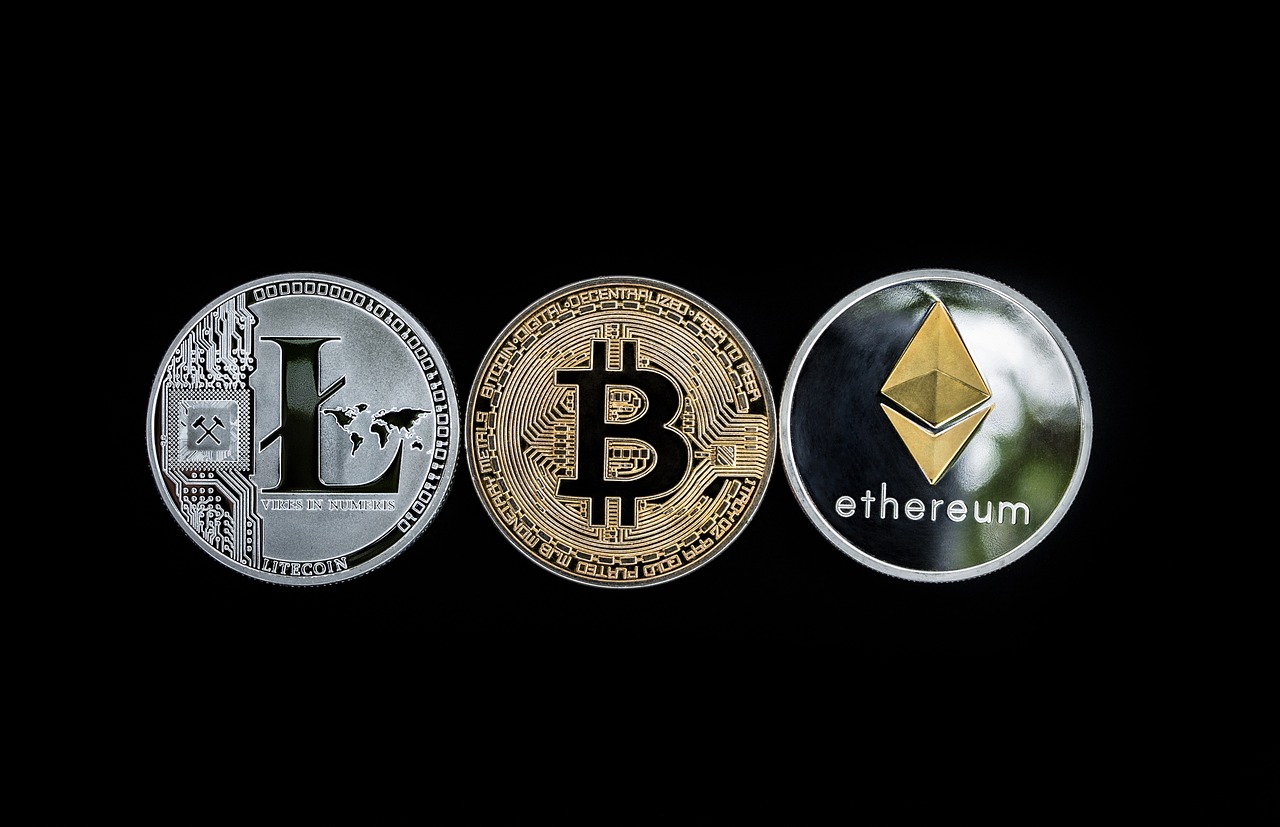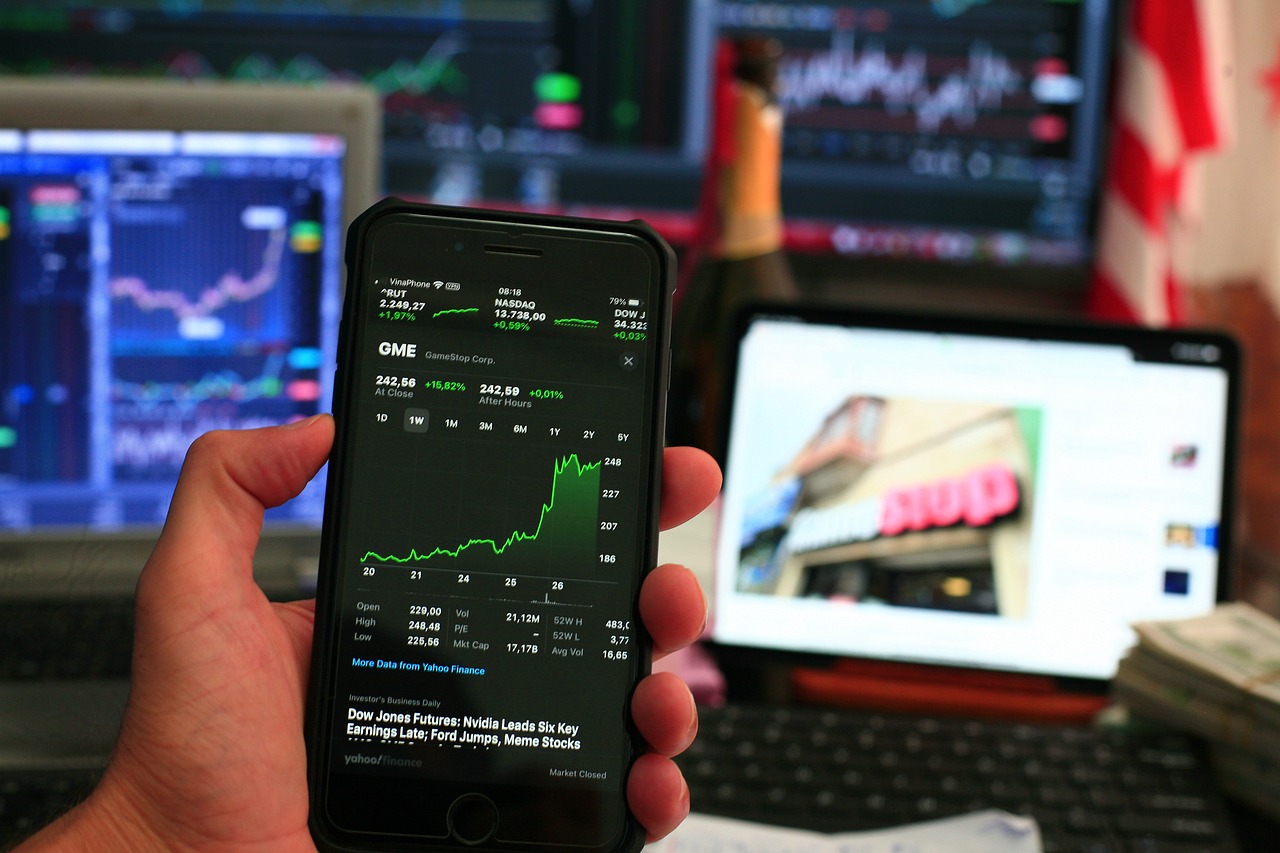The Importance of Liquidity in Stablecoin Markets
In the ever-evolving world of cryptocurrency, stablecoins have emerged as a beacon of stability amidst the volatility that characterizes the broader market. But what truly underpins this stability? The answer lies in liquidity. Liquidity is not just a buzzword; it’s the lifeblood of stablecoin markets, impacting everything from price stability to trading efficiency and overall market health. Imagine a bustling marketplace where buyers and sellers effortlessly exchange goods without a hitch. This is what liquidity does for stablecoins—it creates an environment where transactions can occur smoothly and efficiently, fostering trust among users.
When we talk about liquidity in the context of stablecoins, we're referring to how easily these digital assets can be bought or sold without causing significant price changes. A highly liquid market means that there are plenty of buyers and sellers at all times, which helps maintain the stablecoin's peg to its underlying asset, usually a fiat currency like the US dollar. Conversely, a market with low liquidity can lead to wild price swings and uncertainty, undermining the very purpose of stablecoins as a stable store of value.
Moreover, liquidity plays a crucial role in attracting investors and traders. If a stablecoin is illiquid, potential users may hesitate to engage with it, fearing that they won't be able to enter or exit positions easily. This hesitance can create a vicious cycle, where low liquidity leads to reduced trading activity, which in turn leads to even lower liquidity. On the other hand, when liquidity is robust, it enhances trading efficiency and encourages more participants to join the market, thereby creating a healthier ecosystem.
To illustrate the importance of liquidity, consider the following scenario: If a trader wants to sell a large amount of a stablecoin in a low liquidity environment, they may have to accept a much lower price than expected due to the lack of buyers ready to purchase at the desired price. This situation not only affects the trader but can also create a ripple effect, impacting other users and the overall market perception of that stablecoin. In contrast, in a liquid market, the trader can execute their order with minimal price impact, preserving their investment and maintaining confidence in the asset.
In conclusion, liquidity is the cornerstone of stablecoin markets. It ensures that these digital assets can fulfill their intended purpose of providing stability and efficiency. As the market continues to mature, understanding and enhancing liquidity will be essential for both existing and new stablecoin projects. By fostering a liquid environment, we can ensure that stablecoins remain a viable option for users seeking a reliable and stable form of digital currency.
- What is liquidity in stablecoin markets? Liquidity refers to how easily stablecoins can be bought or sold without affecting their price significantly.
- Why is liquidity important for stablecoins? It ensures price stability, enhances trading efficiency, and builds investor confidence.
- What factors influence liquidity? Factors include trading volume, market depth, and the number of market participants.
- How can liquidity be improved? Strategies include incentive programs, partnerships, and utilizing decentralized exchanges.

Understanding Liquidity
Liquidity is a fundamental concept in finance that describes how easily an asset can be converted into cash or its equivalent without causing a significant change in its price. In the world of stablecoins, liquidity is not just a buzzword; it's a vital component that underpins the stability and trustworthiness of these digital currencies. Imagine trying to sell a rare collectible; if there are no buyers, you might have to sell it at a steep discount. The same principle applies to stablecoins—if they lack liquidity, their value can fluctuate wildly, defeating their purpose as a stable asset.
In stablecoin markets, liquidity plays a crucial role in maintaining price stability and fostering investor confidence. When liquidity is high, transactions can occur seamlessly, allowing traders to buy or sell without worrying about price changes. This is particularly important for stablecoins, which are designed to maintain a stable value against a fiat currency, such as the US dollar. If a stablecoin is illiquid, it can lead to price discrepancies that undermine its intended purpose.
To put it simply, think of liquidity as the oil that keeps the machinery of the stablecoin market running smoothly. When there’s enough oil, everything operates efficiently, and traders can execute their orders without a hitch. Conversely, when the oil runs low, the machine can seize up, leading to delays and inefficiencies. Thus, understanding liquidity is essential for anyone looking to navigate the stablecoin landscape effectively.
Several factors contribute to the liquidity of stablecoins, including:
- Trading Volume: Higher trading volumes typically indicate greater liquidity. When more people are buying and selling a stablecoin, it becomes easier for others to enter or exit positions without impacting the price.
- Market Depth: This refers to the number of buy and sell orders at various price levels. A deep market can absorb larger trades without causing significant price changes, which is crucial for maintaining stability.
- Market Participants: The more participants there are in a market, the greater the liquidity. A diverse set of traders, including retail investors, institutional players, and market makers, can enhance liquidity.
In summary, understanding liquidity is key to grasping how stablecoins function. It affects not only how easily you can trade these assets but also their overall effectiveness in serving as a stable medium of exchange. With the right liquidity, stablecoins can fulfill their promise of providing a reliable and efficient way to transact in the digital economy.

Factors Influencing Liquidity
Liquidity in stablecoin markets is influenced by a multitude of factors, each playing a critical role in determining how easily these digital assets can be bought or sold without causing significant price fluctuations. One of the primary factors is trading volume. When trading volume is high, it generally indicates that there is a robust market for the stablecoin, allowing for smoother transactions. Think of it like a bustling marketplace; the more people there are buying and selling, the easier it is to find a good deal without causing the prices to jump around. Conversely, low trading volumes can create a scenario where even small trades can lead to substantial price changes, which can be detrimental for traders looking to execute orders at specific prices.
Another significant factor is market depth. This refers to the volume of buy and sell orders at various price levels. A deeper market can absorb large transactions without causing the price to fluctuate dramatically, which is essential for maintaining the stability that stablecoins promise. Imagine trying to fill a large bucket with water; if the bucket is deep enough, it can handle the influx without overflowing. However, if it's shallow, even a small amount can cause a spill. Therefore, a stablecoin with good market depth is more likely to maintain its peg to a fiat currency, ensuring that it remains a reliable medium of exchange.
Additionally, the presence of market makers is crucial. Market makers are entities that provide liquidity by placing buy and sell orders, ensuring that there is always a market for stablecoins. They act as intermediaries, making it easier for traders to enter and exit positions. Without market makers, the market can become illiquid, and traders may find it difficult to execute their trades without significantly affecting the price. This is similar to having a friend who always has your back; when you need someone to buy or sell, they’re right there, making the process seamless.
The number of exchange listings also plays a vital role in liquidity. When a stablecoin is listed on multiple exchanges, it tends to attract more trading activity. This increased exposure leads to better price discovery and stability. Think of it this way: if you’re trying to sell a rare collectible, having it listed in several stores increases the chances of finding a buyer quickly. More listings generally equate to more buyers and sellers, which enhances liquidity.
Lastly, the number of market participants cannot be overlooked. A larger pool of traders creates a more dynamic market environment, contributing to greater liquidity. When more individuals are involved, the chances of matching buy and sell orders increase, leading to less price volatility. In essence, a crowded dance floor is more fun and engaging than an empty one; the same principle applies to trading markets. The more participants there are, the more vibrant and liquid the market becomes.
In summary, the interplay of trading volume, market depth, market makers, exchange listings, and the number of market participants collectively influences liquidity in stablecoin markets. Understanding these factors is crucial for anyone looking to navigate the complex world of digital assets effectively.
- What is liquidity in the context of stablecoins? Liquidity refers to how easily stablecoins can be bought or sold without significantly impacting their price, which is essential for maintaining price stability.
- How does trading volume affect liquidity? Higher trading volumes typically indicate greater liquidity, which allows for smoother transactions and less price slippage.
- What role do market makers play? Market makers provide buy and sell orders to enhance liquidity, ensuring that there is always a market for stablecoins.
- Why are exchange listings important? More exchange listings lead to increased trading activity, which enhances liquidity and stabilizes prices.
- How can low liquidity impact traders? Low liquidity can lead to increased volatility, price slippage, and market manipulation risks, making it challenging for traders to execute orders at desired prices.

Trading Volume
When it comes to stablecoin markets, is like the lifeblood that keeps everything flowing smoothly. Imagine trying to swim in a pool with barely any water—it's tough, right? Similarly, low trading volume can create a challenging environment for traders looking to enter or exit positions. Higher trading volumes typically indicate greater liquidity, which means that stablecoins can be bought and sold with ease, allowing for smoother transactions and reducing the dreaded price slippage.
So, what exactly does higher trading volume do for the market? Well, it enhances price stability and fosters investor confidence. When traders see that there is a high volume of transactions occurring, they feel more secure in their decisions to invest or trade. It’s like being at a popular restaurant; if it’s packed, you’re more likely to believe the food is good! In the same way, a bustling trading environment signals to investors that the stablecoin is a reliable asset.
Moreover, trading volume can be influenced by various factors, such as market events, news, and overall sentiment. For instance, a major announcement regarding a stablecoin can lead to a surge in trading activity. Here’s a quick look at how trading volume can impact a stablecoin:
| Impact of Trading Volume | Effect |
|---|---|
| High Volume | Improved liquidity, reduced price slippage, and increased market confidence. |
| Low Volume | Increased volatility, greater price discrepancies, and potential for market manipulation. |
In essence, trading volume acts as a barometer for the health of the stablecoin market. The more active the trading, the more stable and trustworthy the asset appears. However, it’s important to remember that trading volume alone doesn’t guarantee stability. It must be coupled with other factors like market depth and the number of market participants to create a robust trading environment. Just like a well-rounded diet is crucial for good health, a combination of elements is necessary for a thriving stablecoin market.
In conclusion, keeping an eye on trading volume is essential for anyone involved in stablecoin markets. It not only affects individual transactions but also influences the broader market dynamics. As we navigate through this rapidly evolving landscape, understanding the role of trading volume can give traders and investors a significant edge. So, the next time you consider trading a stablecoin, remember to check the volume—it might just make all the difference!
- What is trading volume? Trading volume refers to the total number of assets traded within a specific timeframe, indicating the level of activity in the market.
- How does trading volume affect liquidity? Higher trading volume typically leads to increased liquidity, allowing for smoother transactions and reducing the risk of price slippage.
- Can low trading volume lead to market manipulation? Yes, low trading volume can create opportunities for market manipulation, as traders may exploit price inefficiencies.
- What can increase trading volume? Factors such as market news, partnerships, and incentive programs can all contribute to increased trading volume.

Market Makers
Market makers are the unsung heroes of the trading world, especially in the realm of stablecoins. They act as intermediaries, providing liquidity by consistently offering to buy and sell assets at various price levels. This activity is crucial because it ensures that there is always a market for stablecoins, allowing traders to enter and exit positions with ease. Imagine trying to buy a popular concert ticket; if there are plenty of sellers, you can snag one at a reasonable price without much hassle. But if there are only a few sellers, you might end up paying a premium or, worse, miss out entirely. This analogy perfectly illustrates the importance of market makers in maintaining a healthy trading environment.
Market makers achieve this by placing limit orders on exchanges, which are essentially offers to buy or sell a stablecoin at a specific price. They profit from the difference between the buying price (bid) and the selling price (ask), known as the spread. The narrower the spread, the more attractive the trading environment becomes for traders, as it reduces transaction costs. For instance, if a stablecoin has a bid price of $1.00 and an ask price of $1.01, the spread is just one cent. This tight spread encourages more trading activity, which in turn enhances liquidity.
Additionally, market makers often utilize sophisticated algorithms to manage their orders and adjust their pricing dynamically based on market conditions. This technology allows them to respond quickly to changes in demand and supply, ensuring that they can maintain liquidity even during volatile market conditions. Without these players, stablecoins could suffer from significant price discrepancies, making them less reliable as a means of exchange or store of value.
To put it simply, market makers are like the lifeblood of stablecoin markets. They provide the necessary support that keeps the trading ecosystem functioning smoothly. Without them, the market could become stagnant, leading to wider spreads and increased volatility. In essence, they help stabilize prices and create a more efficient trading environment. Their role is paramount, especially in the context of stablecoins, where price stability is not just a feature but a fundamental requirement.
In conclusion, the presence of market makers in stablecoin markets cannot be overstated. They play a vital role in ensuring that liquidity remains robust, which is essential for maintaining the integrity and reliability of these digital assets. As the market continues to evolve, the importance of market makers will only grow, making them an integral part of the stablecoin landscape.
- What are market makers? Market makers are entities that provide liquidity to a market by continuously buying and selling assets, thus ensuring there is always a market for those assets.
- Why are market makers important for stablecoins? They help maintain price stability and reduce transaction costs by ensuring there are enough buy and sell orders available in the market.
- How do market makers make a profit? They earn profits from the spread between the buying and selling prices of stablecoins.
- Can stablecoins function without market makers? While they can exist, the absence of market makers would likely lead to increased volatility and wider spreads, undermining the stability that stablecoins are designed to provide.

Exchange Listings
When it comes to the world of stablecoins, the number of can significantly influence liquidity. Think of exchange listings as storefronts for stablecoins; the more stores there are, the easier it is for customers (traders) to access the products (stablecoins). Each exchange serves as a platform where buyers and sellers can meet, and a higher number of listings typically translates to increased trading activity. This is crucial because greater trading activity leads to more liquidity, which in turn helps maintain the price stability that stablecoins are known for.
Moreover, when a stablecoin is listed on multiple exchanges, it opens up opportunities for arbitrage, where traders can buy the stablecoin at a lower price on one exchange and sell it at a higher price on another. This not only enhances liquidity but also ensures that prices remain relatively consistent across different platforms. In essence, a well-listed stablecoin can act like a popular product that everyone wants, making it easier for traders to buy or sell without causing significant price fluctuations.
However, not all exchanges are created equal. The reputation and trading volume of the exchanges also play a pivotal role. For instance, being listed on a major exchange with high traffic can provide a stablecoin with a robust liquidity pool, while listings on lesser-known platforms might not attract the same level of trading interest. Therefore, it’s essential for stablecoin projects to strategically choose their exchange partners to maximize their market presence and liquidity.
In conclusion, the impact of exchange listings on liquidity cannot be overstated. By ensuring that a stablecoin is available on multiple reputable exchanges, the project can significantly enhance its trading volume and market depth. This ultimately contributes to the overall health and stability of the stablecoin ecosystem, making it a win-win for both the issuers and the investors alike.
- What is liquidity in stablecoin markets? Liquidity refers to how easily a stablecoin can be bought or sold without affecting its price.
- Why are exchange listings important for stablecoins? More listings generally lead to increased trading activity and better price stability.
- How does low liquidity affect stablecoins? Low liquidity can cause increased volatility and price discrepancies, making trading less efficient.
- What can be done to enhance liquidity? Strategies include incentivizing participation, fostering partnerships, and utilizing decentralized exchanges.

Market Depth
Market depth is a crucial concept in the world of trading, particularly in stablecoin markets. It refers to the volume of buy and sell orders available at various price levels. Think of it like the depth of a swimming pool; the deeper it is, the more room there is for movement without hitting the bottom. In trading, greater market depth means that large transactions can occur without causing significant price fluctuations. This is vital for stablecoins, which are designed to maintain a stable value against fiat currencies.
When market depth is robust, it allows traders to execute large orders with minimal impact on the market price. Imagine trying to throw a rock into a calm pond; if the pond is deep, the ripples will be small. However, if the pond is shallow, the ripples will spread far and wide, causing chaos. In a similar vein, a lack of market depth can lead to increased volatility, where a single large trade can cause a significant price swing. This unpredictability can deter investors and undermine confidence in the stablecoin.
Several factors contribute to market depth in stablecoin trading:
- Order Book Size: A larger order book with numerous buy and sell orders at various price levels indicates better market depth.
- Active Traders: A higher number of active traders contributes to more orders being placed, enhancing market depth.
- Spread Between Buy and Sell Orders: A smaller spread indicates a more liquid market, allowing for better price stability.
To visualize the importance of market depth, consider the following table that illustrates the concept:
| Price Level | Buy Orders | Sell Orders |
|---|---|---|
| $1.00 | 500 USDC | 300 USDC |
| $1.01 | 400 USDC | 250 USDC |
| $1.02 | 600 USDC | 200 USDC |
This table shows how different price levels can have varying amounts of buy and sell orders. A well-balanced order book across multiple price levels indicates strong market depth, which is essential for the stability and reliability of stablecoins. In essence, the deeper the market, the more resilient it is against sudden price movements, making it a safer environment for traders and investors alike.
In conclusion, understanding market depth is fundamental for anyone involved in stablecoin trading. It not only affects price stability but also plays a significant role in overall market health. By ensuring a deep market, traders can execute their orders more efficiently, reducing the risk associated with trading large volumes of stablecoins.
What is market depth?
Market depth refers to the volume of buy and sell orders at various price levels in a trading market. A deeper market allows for larger transactions without significant price changes.
Why is market depth important for stablecoins?
Market depth is crucial for stablecoins as it helps maintain price stability and reduces volatility, allowing for smoother transactions and better investor confidence.
How can I assess the market depth of a stablecoin?
You can assess market depth by looking at the order book on trading platforms, which displays the buy and sell orders at different price levels.
What factors influence market depth?
Factors influencing market depth include the size of the order book, the number of active traders, and the spread between buy and sell orders.

Impact of Low Liquidity
Low liquidity in stablecoin markets can have significant repercussions, creating a ripple effect that impacts traders, investors, and the overall health of the market. When liquidity is low, it becomes increasingly difficult for traders to execute orders at their desired prices. This situation can lead to a phenomenon known as price slippage, where trades are executed at prices that differ from what was expected. Imagine trying to buy a popular concert ticket at face value, only to find that the price has abruptly skyrocketed due to a lack of available tickets. This is akin to what happens in low liquidity markets; traders may find themselves paying much more than anticipated, undermining the very essence of stablecoins, which are designed to maintain price stability.
Moreover, low liquidity can magnify market volatility. When there are fewer buy and sell orders in the market, even small trades can cause significant price fluctuations. This volatility can deter potential investors, as they may perceive the stablecoin as unreliable or too risky. In a market where price stability is paramount, such fluctuations can lead to a loss of confidence among users. Essentially, low liquidity transforms what should be a stable asset into a rollercoaster ride of unpredictable price movements.
Another critical issue that arises from low liquidity is the heightened risk of market manipulation. In a thinly traded market, a small number of traders can exert disproportionate influence over the price of a stablecoin. This manipulation can occur through tactics such as spoofing, where traders place large orders that they have no intention of executing, only to withdraw them at the last moment. This creates an illusion of demand or supply, misleading other traders and destabilizing the market further. As a result, the integrity of the stablecoin is compromised, and it becomes susceptible to exploitation.
To illustrate the potential consequences of low liquidity, consider the following table that outlines the key impacts:
| Impact | Description |
|---|---|
| Price Slippage | Traders experience unexpected price changes during transactions, leading to potential losses. |
| Increased Volatility | Price fluctuations become more pronounced, making the asset less reliable. |
| Market Manipulation | Low liquidity creates opportunities for traders to exploit price inefficiencies. |
In summary, the impact of low liquidity in stablecoin markets cannot be overstated. It creates a precarious environment where price stability is undermined, risks of manipulation are heightened, and traders face the daunting challenge of executing orders at favorable prices. As the cryptocurrency landscape continues to evolve, understanding and addressing liquidity issues will be crucial for maintaining the integrity and effectiveness of stablecoins.
- What is liquidity in the context of stablecoins?
Liquidity refers to how easily a stablecoin can be bought or sold in the market without impacting its price. - Why is low liquidity a problem for stablecoins?
Low liquidity can lead to price slippage, increased volatility, and greater risks of market manipulation, undermining the stability that stablecoins aim to provide. - How can liquidity be improved in stablecoin markets?
Liquidity can be enhanced through incentive programs, partnerships, and the use of decentralized exchanges, which facilitate more trading opportunities.

Price Slippage
Price slippage is a term that often sends shivers down the spine of traders, especially in the world of stablecoins. Imagine you’re at a bustling marketplace, and you spot an amazing deal on your favorite gadget. You rush over, only to find that by the time you get there, the price has jumped significantly. This is akin to what happens in trading when liquidity is low. In simple terms, price slippage occurs when a trade is executed at a different price than what was anticipated due to insufficient liquidity in the market. For stablecoins, which are designed to maintain a stable value, price slippage can be particularly detrimental, undermining their very purpose.
When you're trading stablecoins, you expect them to hold their value, right? That’s the whole point! But when liquidity is lacking, you may find yourself in a situation where you can’t buy or sell at the price you want. This can lead to unexpected costs, making it feel like you’re throwing money out the window. For instance, if you try to sell a stablecoin and there aren’t enough buyers at your desired price, you might have to settle for a lower price, resulting in a loss. This phenomenon is especially pronounced in smaller or less popular stablecoins, where trading volumes might not be high enough to support seamless transactions.
To illustrate this further, let’s take a look at a simple example:
| Scenario | Expected Price | Executed Price | Price Slippage |
|---|---|---|---|
| High Liquidity | $1.00 | $1.00 | $0.00 |
| Low Liquidity | $1.00 | $0.95 | -$0.05 |
As shown in the table, in a high liquidity scenario, you can execute your trade at the expected price without any slippage. However, in a low liquidity environment, you might end up losing 5 cents for every dollar spent, which can add up quickly, especially for larger trades. This highlights the importance of liquidity in maintaining the integrity of stablecoin transactions.
Moreover, price slippage doesn’t just affect individual traders; it can have a ripple effect across the entire market. When traders experience slippage, it can lead to a loss of confidence in the stablecoin, prompting them to seek alternatives. This can create a vicious cycle where low liquidity leads to increased slippage, which in turn drives traders away, further diminishing liquidity. Essentially, it’s a perfect storm that can destabilize the market.
In conclusion, understanding price slippage is crucial for anyone involved in trading stablecoins. By recognizing the factors that contribute to slippage, traders can make more informed decisions, potentially avoiding the pitfalls of low liquidity. Always keep an eye on trading volumes and market conditions to ensure that your transactions go as smoothly as possible. After all, in the fast-paced world of trading, every cent counts!
- What is price slippage? Price slippage occurs when a trade is executed at a different price than expected, often due to low liquidity.
- How does liquidity affect price stability? Higher liquidity generally leads to better price stability as it allows for smoother transactions and less price fluctuation.
- Can I avoid price slippage? While you can't eliminate it, you can minimize slippage by trading during peak hours and choosing stablecoins with higher liquidity.
- What role do market makers play? Market makers enhance liquidity by providing buy and sell orders, ensuring there’s always a market for stablecoins.

Market Manipulation Risks
Market manipulation is a serious concern in the world of stablecoins, particularly when liquidity is low. When liquidity wanes, it creates a perfect storm for unscrupulous traders who might take advantage of price inefficiencies. Imagine a bustling marketplace where everyone is trading freely; now picture that same market suddenly going quiet. In such an environment, a few traders can easily sway prices by executing large orders, creating artificial demand or supply. This behavior can lead to a distorted perception of a stablecoin's value, ultimately undermining the trust that investors place in these digital assets.
One of the most common tactics employed in market manipulation is known as "pump and dump." In this scheme, manipulators will artificially inflate the price of a stablecoin by spreading false information or making substantial purchases to create the illusion of high demand. Once the price has risen significantly, they sell off their holdings at a profit, leaving other investors holding the bag as the price plummets back to reality. This not only harms individual investors but also tarnishes the reputation of the stablecoin itself.
Another risk associated with low liquidity is the phenomenon of "spoofing." This involves placing large orders with no intention of executing them, simply to create a false impression of market activity. When other traders see these large orders, they may react by adjusting their own trading strategies, which can lead to further price manipulation. The lack of liquidity makes it easier for such tactics to succeed, as fewer participants mean that the market is more susceptible to these deceptive practices.
To illustrate the potential impact of market manipulation, consider the following table:
| Type of Manipulation | Description | Impact on Market |
|---|---|---|
| Pump and Dump | Inflating price through false information or large purchases. | Creates artificial demand, leads to significant losses for unsuspecting investors. |
| Spoofing | Placing large orders to mislead other traders. | Causes price fluctuations based on false market signals. |
In conclusion, the risks of market manipulation in low-liquidity environments can have far-reaching consequences for stablecoin markets. It's crucial for investors to be aware of these tactics and for exchanges to implement robust safeguards to protect against such activities. By enhancing liquidity and fostering a more transparent trading environment, we can help mitigate these risks and promote a healthier market for everyone involved.
- What is market manipulation? Market manipulation refers to practices that distort the true supply and demand of a financial asset, often leading to artificial price movements.
- How does low liquidity contribute to market manipulation? Low liquidity makes it easier for a small number of traders to influence prices, as there are fewer participants to absorb large trades.
- What can be done to prevent market manipulation? Increasing liquidity through incentive programs, partnerships, and decentralized finance platforms can help create a more stable trading environment.

Enhancing Liquidity in Stablecoin Markets
Improving liquidity in stablecoin markets is not just a good idea; it’s essential for ensuring the stability and effectiveness of these digital assets. Think of liquidity as the lifeblood of the market; without it, everything can come to a grinding halt. So, how can we pump more liquidity into these markets? There are several strategies that various stakeholders can employ to enhance liquidity, making trading smoother and more efficient for everyone involved.
One of the most effective ways to enhance liquidity is through incentive programs. These programs can motivate users to engage more actively in trading and holding stablecoins. For instance, platforms can offer rewards for trading volume or provide bonuses for liquidity providers. This not only encourages participation but also builds a robust ecosystem where users feel valued and are more likely to contribute to market liquidity.
Another exciting avenue for enhancing liquidity is through the use of decentralized exchanges (DEXs). Unlike traditional exchanges, DEXs allow users to trade directly with one another, bypassing intermediaries. This peer-to-peer model not only democratizes trading but also opens up more avenues for liquidity. Imagine a bustling marketplace where everyone is trading freely without the constraints of a central authority; that’s the vision DEXs are bringing to life in the stablecoin space.
Moreover, fostering partnerships between different platforms can significantly boost liquidity. When stablecoins are integrated across various ecosystems—be it payment processors, lending platforms, or even gaming applications—they can attract a broader user base. This interconnectedness creates a network effect where the demand for stablecoins increases, thus enhancing their liquidity. For example, if a stablecoin is accepted on multiple platforms, users are more likely to trade it, leading to a healthier market.
To visualize the potential impact of these strategies, consider the following table that outlines various methods of enhancing liquidity along with their benefits:
| Method | Benefits |
|---|---|
| Incentive Programs | Encourages active trading and holding; rewards users for participation |
| Decentralized Exchanges (DEXs) | Allows peer-to-peer trading; reduces reliance on intermediaries |
| Partnerships | Broadens user base; increases demand through ecosystem integration |
In conclusion, enhancing liquidity in stablecoin markets is a multifaceted challenge, but with the right strategies in place, it can be achieved. By implementing incentive programs, embracing decentralized exchanges, and fostering partnerships, we can create a thriving environment that not only stabilizes prices but also instills confidence among investors. After all, a liquid market is a healthy market, and it’s crucial for the future of stablecoins.
- What is liquidity in stablecoin markets?
Liquidity refers to how easily stablecoins can be bought or sold in the market without affecting their price. High liquidity ensures price stability and investor confidence.
- Why is liquidity important for stablecoins?
Liquidity is vital for maintaining price stability, reducing volatility, and ensuring that traders can execute orders at desired prices.
- How can I increase liquidity in my stablecoin?
Implementing incentive programs, partnering with other platforms, and utilizing decentralized exchanges are effective strategies for increasing liquidity.
- What are decentralized exchanges (DEXs)?
DEXs are platforms that allow users to trade directly with one another, enhancing liquidity by removing intermediaries from the trading process.

Incentive Programs
In the bustling world of stablecoins, play a pivotal role in boosting liquidity and ensuring a vibrant trading environment. Think of these programs as the fuel that keeps the engine of the stablecoin market running smoothly. By offering rewards for trading, holding, or utilizing stablecoins, these programs not only attract new participants but also encourage existing users to remain active. This creates a ripple effect, enhancing overall market liquidity.
One of the most effective ways to implement incentive programs is through yield farming. In this scenario, users can earn interest or rewards by locking up their stablecoins in a liquidity pool. This not only increases the amount of stablecoins available for trading but also provides users with a tangible benefit for their participation. Imagine putting your money in a savings account that not only keeps your funds safe but also rewards you with interest just for letting it sit there!
Additionally, trading competitions can be an exciting way to engage users. By offering prizes for the highest trading volumes or the most successful trades, exchanges can stimulate activity and attract traders looking to capitalize on their skills. It’s like a friendly competition where everyone can win, and the market benefits from the increased activity.
Moreover, partnerships with other platforms can amplify the reach and effectiveness of these incentive programs. For example, when stablecoins are integrated into popular decentralized finance (DeFi) platforms, users are more likely to engage with them due to the additional functionalities and rewards available. This synergy can lead to a substantial increase in liquidity, as more users flock to take advantage of the benefits.
In summary, incentive programs are not merely a marketing strategy; they are essential for fostering a healthy and liquid stablecoin market. By creating an environment where users feel valued and rewarded, these programs can significantly enhance trading volumes, reduce price volatility, and ultimately contribute to the stability of the market. As the stablecoin ecosystem continues to evolve, the importance of well-structured incentive programs will only grow, paving the way for a more robust financial landscape.
- What are incentive programs in stablecoin markets?
Incentive programs are strategies implemented by exchanges or platforms to encourage trading and holding of stablecoins, often through rewards or benefits. - How do yield farming and trading competitions work?
Yield farming allows users to earn rewards by providing liquidity, while trading competitions reward users for achieving high trading volumes or successful trades. - Why are partnerships important for stablecoin liquidity?
Partnerships with other platforms can expand the user base and functionalities of stablecoins, leading to increased trading activity and liquidity.

Decentralized Exchanges
Decentralized exchanges (DEXs) are revolutionizing the way we trade stablecoins and other cryptocurrencies. Unlike traditional exchanges that operate on a centralized model, DEXs allow users to trade directly with one another, eliminating the need for an intermediary. This shift not only enhances liquidity but also empowers users by giving them full control over their assets. Imagine being able to swap currencies without having to trust a third party—this is the beauty of decentralized exchanges!
The architecture of DEXs is built on blockchain technology, which ensures transparency and security. Each transaction is recorded on the blockchain, making it nearly impossible for any single entity to manipulate the market. This decentralized nature significantly reduces the risks associated with hacking and fraud, which are prevalent in centralized exchanges. Furthermore, DEXs often feature automated market-making protocols that help maintain liquidity by enabling users to provide liquidity in exchange for rewards. This is akin to planting seeds in a garden; the more you plant, the more you can harvest!
One of the major advantages of DEXs is their ability to operate 24/7. Traders can buy and sell stablecoins at any time, without the constraints of traditional market hours. This constant availability not only increases trading volume but also attracts a wider range of participants, further enhancing liquidity. For example, popular DEXs like Uniswap and SushiSwap have become hotbeds for trading activity, allowing users to engage in transactions at lightning speed.
However, it's important to note that while DEXs offer many benefits, they also come with their own set of challenges. For instance, the user experience can vary significantly between platforms, and the lack of customer support can be daunting for newcomers. Additionally, the risk of impermanent loss—a phenomenon where liquidity providers may suffer losses due to price volatility—can deter some users from participating.
In conclusion, decentralized exchanges are a critical component of the evolving stablecoin landscape. They not only enhance liquidity but also promote a more inclusive and secure trading environment. As more users recognize the advantages of DEXs, we can expect to see an even greater shift towards decentralized trading solutions, ultimately leading to a more robust and resilient market.
- What are decentralized exchanges? DEXs are trading platforms that allow users to trade cryptocurrencies directly with one another without the need for a central authority.
- How do DEXs enhance liquidity? By allowing users to trade directly, DEXs increase trading volume and attract a broader range of participants, which improves market depth and stability.
- What are the risks associated with using DEXs? Users may face challenges such as varying user experiences, lack of customer support, and risks like impermanent loss.
Frequently Asked Questions
- What is liquidity in stablecoin markets?
Liquidity in stablecoin markets refers to the ease with which stablecoins can be bought or sold without significantly affecting their price. High liquidity ensures that transactions can occur smoothly, maintaining price stability and investor confidence.
- How does trading volume affect liquidity?
Higher trading volumes typically indicate greater liquidity. When more people are buying and selling stablecoins, it allows for smoother transactions and reduces price slippage, which is crucial for the effectiveness of stablecoins.
- What role do market makers play in enhancing liquidity?
Market makers are essential in providing buy and sell orders for stablecoins. They ensure that there is always a market available, which helps maintain liquidity and allows for easier transactions for traders.
- How do exchange listings impact liquidity?
The number of exchanges that list a stablecoin greatly affects its liquidity. More listings usually lead to increased trading activity, which enhances price stability and overall market health.
- What is market depth and why is it important?
Market depth refers to the volume of buy and sell orders at various price levels. A deep market can absorb large transactions without causing significant price changes, which is vital for maintaining stability in stablecoin markets.
- What are the consequences of low liquidity?
Low liquidity can lead to increased volatility and price discrepancies, making it difficult for traders to execute orders at their desired prices. This undermines the primary purpose of stablecoins, which is to maintain a stable value.
- What is price slippage?
Price slippage occurs when a trade is executed at a different price than expected due to low liquidity. This can be particularly detrimental in stablecoin transactions, where maintaining a stable price is crucial.
- How can low liquidity lead to market manipulation?
Low liquidity may expose stablecoins to market manipulation. Traders can exploit price inefficiencies, which further destabilizes the market and can lead to significant losses for other investors.
- What strategies can enhance liquidity in stablecoin markets?
Enhancing liquidity can involve various strategies, such as incentivizing participation through rewards, fostering partnerships, and leveraging decentralized finance (DeFi) platforms to create more trading opportunities.
- What are incentive programs and how do they help?
Incentive programs encourage users to trade and hold stablecoins, which can increase overall liquidity and stability in the market. These programs might include rewards for trading or holding stablecoins for extended periods.
- How do decentralized exchanges (DEXs) improve liquidity?
Decentralized exchanges offer an alternative trading venue that enhances liquidity by allowing users to trade stablecoins directly with one another without intermediaries. This can lead to more trading opportunities and better price stability.



















